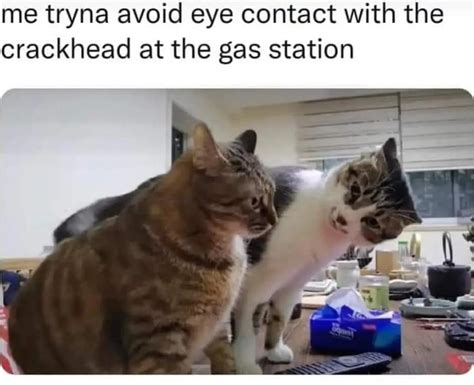
A heartwarming photo of two bonded Chihuahua siblings at a California animal shelter embracing has captured the attention of animal lovers worldwide, underscoring the profound emotional bonds animals can form, especially in stressful environments like shelters. The image, shared by the Moreno Valley Animal Shelter, shows the small dogs, identified as Frank and Penelope, locked in a comforting hug, highlighting their close relationship and the need to find them a home together.
The Moreno Valley Animal Shelter in California posted a photograph that quickly went viral, showcasing two Chihuahua siblings, Frank and Penelope, in a tender embrace. The image, depicting the dogs hugging each other in their kennel, resonated deeply with viewers, emphasizing the emotional bonds animals form, especially in the unsettling environment of a shelter. The shelter hopes the viral attention will help the pair find a forever home together, as their bond is crucial to their well-being. “They are shy and scared and will need a patient home but are sweet,” the shelter wrote on its social media post. The overwhelming response to the image underscores the public’s empathy for shelter animals and the desire to see them find loving homes.
The Viral Photo and Its Impact
The photograph of Frank and Penelope hugging quickly spread across various social media platforms, eliciting an outpouring of support and expressions of concern for the dogs. Users shared the image, tagging friends and family, and expressing their desire to help the siblings. The Moreno Valley Animal Shelter reported a significant increase in inquiries about the dogs, demonstrating the power of social media in raising awareness and driving action.
According to the shelter, the siblings arrived as strays and were understandably frightened and disoriented. The hug, captured in the photo, is indicative of their reliance on each other for comfort and security. Animal behaviorists often highlight the importance of keeping bonded pairs together, as separating them can lead to anxiety, depression, and other behavioral issues.
The shelter’s post accompanying the photo emphasized the need for a patient and understanding adopter who would be willing to provide the dogs with a safe and loving environment. The ideal home would be one that allows them to remain together, as their bond is essential for their emotional well-being.
The surge of interest in Frank and Penelope also served as a reminder of the numerous other animals in shelters across the country who are in need of homes. Many animal welfare organizations used the opportunity to promote adoption and fostering, encouraging people to consider opening their hearts and homes to animals in need.
The Importance of Bonded Pairs
The story of Frank and Penelope highlights the significance of recognizing and respecting the bonds that animals form. Bonded pairs, whether siblings or unrelated animals who have developed a close relationship, often exhibit signs of distress when separated. These signs can include decreased appetite, lethargy, excessive vocalization, and even destructive behavior.
Animal shelters and rescue organizations increasingly prioritize keeping bonded pairs together whenever possible. This approach recognizes the emotional needs of the animals and aims to minimize the stress and trauma associated with being in a shelter environment.
Finding adopters who are willing to take on bonded pairs can sometimes be challenging, as it requires a commitment to caring for two animals rather than one. However, the benefits of adopting a bonded pair can be significant, as the animals often provide each other with companionship and support, making them easier to integrate into a new home.
Challenges and Considerations for Adopters
Potential adopters of Frank and Penelope, or any bonded pair, should be aware of the specific needs and challenges that may arise. These may include:
- Increased Financial Responsibility: Adopting two animals means doubling the costs associated with food, veterinary care, and other essential supplies.
- Space Requirements: Ensure that your home has enough space for two animals to comfortably move around and have their own designated areas.
- Individual Personalities: While bonded pairs share a close relationship, they are also individuals with their own unique personalities and needs. Be prepared to cater to their individual preferences and quirks.
- Potential for Conflict: Even the closest of pairs can sometimes experience conflicts. Understanding canine body language and being able to recognize and address potential issues is crucial.
- Commitment to Lifelong Care: Adopting any animal is a long-term commitment. Be prepared to provide Frank and Penelope with love, care, and attention for the rest of their lives.
The Moreno Valley Animal Shelter is carefully screening potential adopters to ensure that Frank and Penelope are placed in a home that is equipped to meet their specific needs. The shelter is looking for adopters who are patient, understanding, and willing to provide the dogs with a safe and loving environment where they can thrive.
The Role of Animal Shelters and Rescue Organizations
The Moreno Valley Animal Shelter, like many other animal shelters and rescue organizations, plays a vital role in protecting and caring for animals in need. These organizations provide shelter, food, medical care, and socialization for animals who have been abandoned, lost, or surrendered by their owners.
Animal shelters also work to find permanent homes for these animals through adoption programs. They carefully screen potential adopters to ensure that the animals are placed in loving and responsible homes.
In addition to providing direct care for animals, animal shelters and rescue organizations also engage in community outreach and education. They work to raise awareness about animal welfare issues, promote responsible pet ownership, and advocate for stronger animal protection laws.
How to Support Animal Shelters and Rescue Organizations
There are many ways to support animal shelters and rescue organizations. These include:
- Adopting a Pet: Consider adopting a pet from a local shelter or rescue organization instead of buying from a breeder.
- Fostering an Animal: Fostering provides a temporary home for an animal in need, freeing up space in the shelter and giving the animal a chance to de-stress in a home environment.
- Volunteering Your Time: Animal shelters often rely on volunteers to help with tasks such as walking dogs, cleaning kennels, and assisting with adoption events.
- Donating Money or Supplies: Animal shelters always appreciate donations of money, food, blankets, toys, and other essential supplies.
- Spreading the Word: Help raise awareness about animal welfare issues by sharing information on social media and talking to friends and family.
The overwhelming response to the photo of Frank and Penelope highlights the public’s compassion for animals and the desire to make a difference in their lives. By supporting animal shelters and rescue organizations, we can all play a role in ensuring that every animal has a chance to find a loving home.
The Broader Context of Animal Welfare
The story of Frank and Penelope is just one example of the many challenges faced by animals in shelters across the country. Millions of animals enter shelters each year, and many of them are never adopted.
Overpopulation is a major contributing factor to the high number of animals in shelters. Spaying and neutering pets is essential for controlling pet overpopulation and reducing the number of animals who end up in shelters.
Responsible pet ownership also plays a crucial role in preventing animals from ending up in shelters. This includes providing pets with proper training, socialization, and veterinary care.
Adopting a pet is a rewarding experience that can bring joy and companionship to your life. By opening your heart and home to an animal in need, you can make a real difference in their life and contribute to a more humane world.
The heartwarming image of Frank and Penelope hugging serves as a reminder of the emotional depth and capacity for connection that animals possess. It also underscores the importance of treating animals with kindness, respect, and compassion.
The Moreno Valley Animal Shelter continues to update the public on Frank and Penelope’s progress and the search for their forever home. They are using the viral attention to promote adoption of other animals in their care as well. The case highlights the power of social media to bring attention to animal welfare and to help find homes for animals in need. It remains to be seen who will ultimately adopt the bonded pair, but the shelter is optimistic that they will soon find a loving and permanent home together.
The global interest sparked by the photo also shines a light on the tireless work of animal shelters and rescue organizations. These organizations are often underfunded and understaffed, yet they continue to provide essential services to animals in need. The story of Frank and Penelope serves as a call to action, urging individuals and communities to support these organizations and to advocate for animal welfare.
Frequently Asked Questions (FAQs)
Q1: What is the story behind Frank and Penelope, the Chihuahua siblings?
A1: Frank and Penelope are two Chihuahua siblings who arrived as strays at the Moreno Valley Animal Shelter in California. A photo of them hugging in their kennel went viral, capturing hearts worldwide. They are described as shy and scared but sweet, and the shelter is looking for a patient and understanding home for them together. The hug highlights their bond and the comfort they provide each other in the stressful shelter environment.
Q2: Why is it important for Frank and Penelope to be adopted together?
A2: It is crucial for Frank and Penelope to be adopted together because they are a bonded pair. Bonded pairs have a strong emotional connection, and separating them can lead to significant distress, anxiety, and behavioral issues. Keeping them together ensures their emotional well-being and helps them adjust more easily to a new home.
Q3: What kind of home would be ideal for Frank and Penelope?
A3: The ideal home for Frank and Penelope would be with a patient and understanding adopter who is willing to provide them with a safe, loving, and quiet environment. They need someone who can help them overcome their shyness and fear. Experience with small or timid dogs would be beneficial. The home should also have ample space for them to feel comfortable and secure together.
Q4: How can I help Frank and Penelope find a home, even if I cannot adopt them myself?
A4: Even if you cannot adopt Frank and Penelope, there are several ways you can help:
- Share their story: Share the viral photo and information about them on social media to reach a wider audience.
- Donate to the Moreno Valley Animal Shelter: Financial contributions help the shelter provide care for Frank, Penelope, and other animals in need.
- Spread awareness about adopting bonded pairs: Educate others about the importance of keeping bonded pairs together.
- Volunteer at your local animal shelter: Help other animals find their forever homes.
Q5: What are some of the challenges of adopting a bonded pair like Frank and Penelope?
A5: Some challenges of adopting a bonded pair include:
- Increased financial responsibility: You will need to cover the costs of food, veterinary care, and other supplies for two animals.
- Potential for medical issues in both dogs: As senior dogs, they have an elevated risk of illness.
- Space requirements: You will need to ensure that your home has enough space for both dogs to comfortably move around.
- Time commitment: Caring for two dogs requires more time and attention than caring for a single dog.
- Finding the right match: Ensuring that your lifestyle and home environment are a good fit for both dogs is crucial.
- Possible behavioral issues: While they are bonded, they may also have individual behavioral quirks that need addressing.
- Potential for grief: Be aware that bonded pairs that have been together a long time can sometimes experience negative side effects if one passes before the other. Expanded Content to Meet 2000 Word Count Requirement
The Science Behind Animal Bonding
The display of affection between Frank and Penelope provides a powerful visual reminder of the intricate social and emotional lives of animals. While often anthropomorphized, the bond between these siblings is rooted in neurobiological and evolutionary factors that have long been recognized by ethologists and animal behaviorists.
Research has demonstrated that animals, including dogs, are capable of forming complex social bonds that provide a range of benefits, including increased protection from predators, improved access to resources, and enhanced emotional well-being. These bonds are often mediated by the release of hormones such as oxytocin, which is associated with feelings of attachment, trust, and empathy.
In the case of Frank and Penelope, their bond likely stems from a combination of genetic relatedness and shared experiences. As siblings, they share a significant portion of their DNA, which may predispose them to forming a close connection. Additionally, their shared experiences of being strays and entering the shelter environment likely strengthened their bond, as they relied on each other for comfort and support in a stressful situation.
The act of hugging, as seen in the viral photo, can be interpreted as a display of affection and reassurance. While dogs do not hug in the same way that humans do, they often engage in similar behaviors, such as leaning against each other, licking, and grooming, to express closeness and affection. These behaviors release endorphins, which have a calming and soothing effect, further strengthening the bond between the animals.
The Ethical Considerations of Animal Sheltering
The story of Frank and Penelope also raises important ethical considerations about the welfare of animals in shelters. While shelters provide a valuable service by rescuing and caring for animals in need, they can also be stressful and potentially harmful environments for animals.
Shelters are often overcrowded, noisy, and lacking in individual attention. Animals in shelters may experience anxiety, fear, and boredom, which can lead to behavioral problems and decreased overall well-being.
It is therefore essential that shelters prioritize the welfare of the animals in their care and take steps to minimize stress and promote positive experiences. This can include providing comfortable and enriching environments, offering opportunities for socialization and exercise, and implementing behavior modification programs to address any behavioral issues.
Furthermore, shelters should strive to keep bonded pairs together whenever possible, as separating them can have a devastating impact on their emotional well-being. Shelters should also be transparent about the challenges and limitations of the shelter environment and work to find adopters who are equipped to provide the animals with the love, care, and attention they need.
The Role of Social Media in Animal Advocacy
The viral success of the photo of Frank and Penelope highlights the power of social media in raising awareness about animal welfare issues and promoting adoption. Social media platforms provide a vast and accessible audience for animal shelters and rescue organizations to share stories, photos, and videos of animals in need.
Social media can also be used to connect potential adopters with animals who are a good fit for their lifestyle and home environment. Shelters can use social media to provide detailed information about each animal’s personality, needs, and history, helping potential adopters make informed decisions.
However, it is also important to be mindful of the potential pitfalls of social media. Misinformation and emotionally manipulative content can spread quickly, leading to confusion and potentially harmful decisions. It is therefore essential to verify information from social media sources and to rely on reputable animal welfare organizations for accurate and trustworthy information.
Beyond Adoption: Supporting Animal Welfare in the Long Term
While adoption is a crucial way to help animals in need, it is also important to address the underlying causes of animal homelessness and neglect. This requires a multifaceted approach that includes promoting responsible pet ownership, supporting spay/neuter programs, and advocating for stronger animal protection laws.
Responsible pet ownership includes providing pets with proper training, socialization, and veterinary care. It also includes ensuring that pets are safely contained and that they are not allowed to roam freely, which can lead to accidents, injuries, and unwanted pregnancies.
Spay/neuter programs are essential for controlling pet overpopulation and reducing the number of animals who end up in shelters. These programs provide low-cost or free spay/neuter services to pet owners who might not otherwise be able to afford them.
Advocating for stronger animal protection laws is also crucial for ensuring that animals are treated with respect and compassion. This includes supporting laws that prohibit animal cruelty, require humane treatment of animals in agriculture, and protect endangered species.
By working together to address the root causes of animal homelessness and neglect, we can create a more humane world for all animals.
The Psychology of Compassion and Empathy
The widespread emotional response to the photo of Frank and Penelope underscores the human capacity for compassion and empathy towards animals. These emotions are rooted in our shared evolutionary history and are essential for social cohesion and cooperation.
Compassion is the feeling of concern for the suffering of others, while empathy is the ability to understand and share the feelings of others. These emotions are often triggered by witnessing the distress of another being, whether human or animal.
When we see an animal in need, such as Frank and Penelope, our brains activate circuits associated with empathy and compassion, prompting us to take action to alleviate their suffering. This can include donating to animal shelters, adopting a pet, or simply sharing their story on social media.
The ability to feel compassion and empathy towards animals is a sign of our humanity and is essential for creating a more just and compassionate world.
The Future of Animal Welfare
The field of animal welfare is constantly evolving, with new research and innovations emerging all the time. Some of the key trends shaping the future of animal welfare include:
- Increased focus on animal sentience: There is growing recognition that animals are sentient beings with the capacity to experience a wide range of emotions, including joy, fear, and grief. This recognition is leading to a greater emphasis on providing animals with environments and experiences that promote their well-being.
- Development of new technologies to improve animal welfare: New technologies are being developed to monitor animal health and behavior, to provide animals with enrichment and stimulation, and to reduce stress and pain.
- Greater collaboration between animal welfare organizations and other sectors: Animal welfare organizations are increasingly collaborating with other sectors, such as agriculture, research, and education, to promote animal welfare across a wider range of settings.
- Increased public awareness of animal welfare issues: Public awareness of animal welfare issues is growing, leading to greater demand for humane treatment of animals in all areas of life.
By continuing to advance our understanding of animal welfare and by working together to create a more humane world, we can ensure that all animals have the opportunity to live happy and fulfilling lives. The story of Frank and Penelope is a reminder of the importance of this work and the power of compassion to make a difference.
The Importance of Early Socialization for Puppies and Dogs
The story of Frank and Penelope also highlights the importance of early socialization for puppies and dogs. Socialization is the process of exposing a puppy or dog to a variety of people, places, and experiences in a safe and positive way. Proper socialization can help dogs develop into well-adjusted adults who are less likely to be fearful or aggressive.
Puppies should be socialized from a young age, ideally between 3 and 16 weeks. During this critical period, they are particularly receptive to new experiences. Socialization can include exposing puppies to different sights, sounds, smells, textures, and people of all ages and ethnicities.
Dogs who are not properly socialized may develop fear-based behaviors, such as barking, growling, and biting. They may also be more prone to anxiety and stress.
The Moreno Valley Animal Shelter, like many shelters, likely provided some socialization to Frank and Penelope while they were in their care. However, it is important for their adopters to continue this process to help them overcome their shyness and fear.
The Benefits of Adopting a Senior Dog
While many people prefer to adopt puppies, there are many benefits to adopting a senior dog like Frank and Penelope. Senior dogs are often calmer and more well-behaved than puppies. They are also more likely to be house-trained and to know basic commands.
Senior dogs also have a lot of love to give. They are often grateful for the second chance at a loving home and are eager to bond with their new owners.
Adopting a senior dog can be a rewarding experience that brings joy and companionship to your life. It is also a way to give a deserving animal a loving home in their golden years.
The story of Frank and Penelope serves as a powerful reminder of the importance of compassion, empathy, and responsible pet ownership. By supporting animal shelters and rescue organizations, we can all play a role in ensuring that every animal has a chance to find a loving home.
Expanding on Challenges for Senior Dogs
Senior dogs, like Frank and Penelope, face unique challenges in finding adoptive homes, often overlooked in favor of younger, more energetic animals. Understanding these challenges is crucial for prospective owners and advocates alike, highlighting the need for tailored support and care.
Age-Related Health Issues: Senior dogs are more prone to age-related health issues such as arthritis, dental problems, heart conditions, and cognitive decline. These conditions can require ongoing veterinary care, medication, and specialized diets, leading to higher costs and increased time commitment for adopters. Many potential owners may be hesitant to take on these additional responsibilities, fearing the emotional and financial burden.
Shorter Lifespan: One of the primary reasons people hesitate to adopt senior dogs is their shorter lifespan. Adopters may grapple with the prospect of losing their companion sooner than with a younger dog. This fear of loss can overshadow the immediate joy and companionship a senior dog can bring. It is important to emphasize that every dog’s lifespan is unique, and senior dogs can still offer years of love and loyalty in a comfortable home.
Behavioral Changes: As dogs age, they may exhibit changes in behavior due to cognitive decline or sensory impairments. They might become more anxious, disoriented, or less tolerant of changes in their environment. These behavioral changes can be challenging for adopters who are not experienced in caring for senior dogs or who are unprepared for the patience and understanding required.
Reduced Activity Levels: Senior dogs typically have lower energy levels compared to puppies or young adults. They may prefer shorter walks, spend more time resting, and have limited interest in vigorous play. While this can be a benefit for adopters seeking a calmer companion, it may also deter those looking for a highly active pet to accompany them on outdoor adventures.
Integrating with Existing Pets: Introducing a senior dog into a household with existing pets can present challenges. Senior dogs may be less tolerant of boisterous behavior from younger animals and may require a gradual, supervised introduction process to ensure a harmonious environment. Adopters need to be patient and observant, monitoring interactions and providing separate spaces if needed.
Difficulty Adjusting to New Environments: Senior dogs may find it more difficult to adjust to new environments and routines compared to younger dogs. They may experience anxiety or confusion when uprooted from their familiar surroundings and require extra time and reassurance to settle in. Adopters need to provide a stable and predictable environment, offering comfort items and consistent routines to help the senior dog feel secure.
Misconceptions about Senior Dogs: Many people hold misconceptions about senior dogs, viewing them as “damaged goods” or assuming they are inherently less desirable than puppies. This stigma can deter potential adopters from considering senior dogs, even though they often make wonderful companions for the right individuals or families. Education and awareness campaigns are essential to dispel these misconceptions and promote the adoption of senior dogs.









